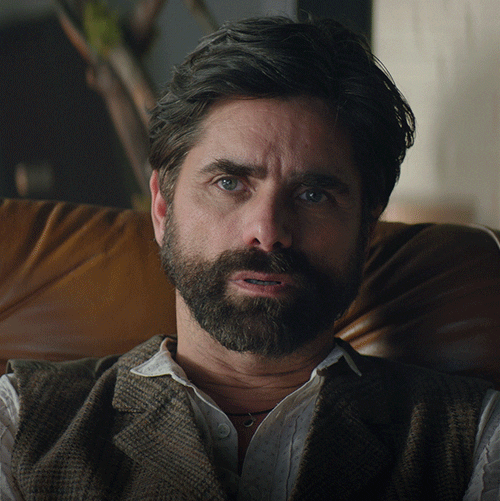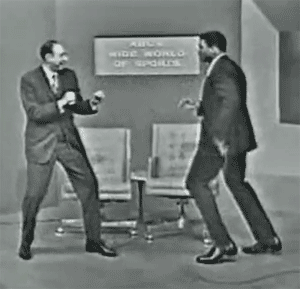An Unlikely Parity
How Stand Up Comedy Made Me a Better Designer
May 06, 2019 – by Nermin
Early last year, I took a beginner’s stand up comedy class in order to become a better designer… It’s a stretch, I know. But stick with me.
Prior to joining the studio in 2017, I’d been a freelance designer, living the elusive dream of working for myself. Not too shabby. But I was slowly plateauing into a creative rut. My process was hidden, only to be revealed in beautifully mocked up presentations at the end of siloed design sprints (more on this later). I didn’t have to deal with the discomfort of sharing early work. Transitioning into Firebelly’s collaborative environment was a challenge at first. Sharing work-in-progress required vulnerability that, back then, I lacked the courage for. But in order to grow and thrive, I needed to get comfortable with being uncomfortable.
So how did I get into comedy, (I pretend) you ask?
It all started as I watched my friend and fierce fireballer, Kristin, crush and close(!) her first (ever) stand-up comedy show. Impulsively, I signed up for the same 6 week class led by the fearless Chicago-based comic, Alex Kumin. An introduction to the fundamentals of joke writing, it culminated in a 5‑minute set as part of a group show in front of a real audience. Five minutes of original comedic material may not seem like a huge deal, but for the uninitiated, like myself, it was like giving birth.
I wanted to try something so scary that it would make putting myself and my work out there seem infinitely easier. To be clear, I am not phased by public speaking (classic Leo). Taking a stab at stand-up comedy in an age of countless Netflix comedy specials seemed like the right dose of discomfort. I want to say that this experience did do that. That I now am a fearless sharer of scrappy work-in-progress. CHECK. Crossed it off the list. But that would be the real joke! I did, however, learn about myself and the sometimes painstaking work of being a maker of, really, anything. I hope sharing these insights will resonate with anyone trying to balance the tricky territory between self-confidence, humility, imposter syndrome, and self-growth.
COMEDY OR DESIGN, WE’RE CRAFTING A NARRATIVE
The basic joke structure goes something like this: set the context, make a statement/observation, ask a question, and provide an unexpected answer (the punch line). There’s a lot of tension built up in any good comedy set. The balanced interplay of tension and relief is what makes a joke/story good. It’s comparable to the implicit build-up in a design presentation; we state what we know, we ask “the question,” and offer a number of refreshingly unexpected, but authentic, solutions. As in comedy, we aim to tell a cohesive narrative (visually) from start to finish. We tug on all the right emotions. Both designer and comedian take us on a journey. They hold the audience’s hand and point things out along the way, and at the end of the tour, (if we’ve done our job) they feel changed somehow. We make things that make you pause and reflect, laugh and rejoice, and if we’re lucky, maybe even cry a little bit.
“Both designer and comedian take us on a journey. They hold the audience’s hand and point things out along the way, and at the end of the tour, they feel changed somehow.”

THE SILO MENTALITY GETS YOU NOWHERE
First, let’s get concrete (pun intended). What is a silo?
In an organization, silos happen when a system, process, or department is isolated from the rest. Stand-up comedy is a seemingly siloed practice. After all, it’s the comic alone on stage doing the heavy lifting of making the audience laugh. But having gone through this, I’ve learned that collaboration is inherent to the comic’s process. They share and test jokes with other comics, and the people around them, early and often. Open mics are testing grounds for new material. They build on each others ideas, cut out the fluff, and most importantly: They. Keep It. Real (read: constructive criticism).

Similarly, a healthy design team embraces discomfort and focuses on solving problems, together. Our clients and collaborators are equally responsible for keeping us in check. We rely on their open, honest feedback as much as they rely on us “to tell a good joke.”
BOTH DISCIPLINES ENLIGHTEN AND DELIGHT
The work we do as designers is often seen as work that primarily fulfills consumer needs. Of course, a lot of it does. It is why here at Firebelly, we only work with people we respect, whose work we want to see in the wild. But design is a powerful tool to elicit critical reflection and inspire change. We choose to use our craft to shed light on the issues that matter most (social injustice, equity, and basic human rights, to name a few). To distill such complex topics, we ask a lot of tough questions. We dig deep. We define and redefine our practice in the process.
To witness stellar examples of thought-provoking reflexive comedy, one needs to look no further than Hannah Gadsby’s special Nannette—where she flips the discipline on its head by critiquing a body of work that launched her career. Or Aparna Nancherla who openly shares her daily struggles with depression and anxiety. Kumail Nanjiani shares his own experience with racism, undercutting it with smart humor. In the same vein, with much humility, I used the stage to talk about the challenges of motherhood in a “village-less” world, the ongoing war in Syria, and a glimpse at what it’s like to be a visibly practicing Muslim woman in America. To my surprise, my seemingly personal struggles resonated with others who were kind enough to share.

YOU CAN’T BE BRAVE WITHOUT FEAR
In the comedy class, I would often hear that it is near impossible to not compare your set to others’. Comedians tend to develop a personal style, and if you’re a growing comic, you wonder if your own style is “as good.” That sneaky fear that your joke will not be validated by an audience can be crippling. I grappled with that same fear as a designer, until I started to openly talk about it and realize that most, if not all creatives share the same struggle, wherever they are in their careers. That, in itself, was strangely empowering. That connection was a real example of Brene Brown’s ever-so-illuminating words: “The path towards one another is vulnerability.” One of my wise teachers once told me that having imposter syndrome is in itself a characteristic of sincerity. And that fear is necessary to pluck up your courage to bring your whole self to everything you do.

CREATE YOUR VILLAGE
Whether you’re a comic, designer, novelist, or a beatboxing parent, none of us can do this alone. Share your work, your struggles, and your “failures.” You never know who you might inspire, and whose words might heal you. Both through working as a designer, and my brief moment in the world of stand up, I’ve found that having the courage to share my work consistently made it better. And in that process, I am creating an intentional community — a village that keeps me on my toes and keeps my toes grounded all at once.
Will I continue to do stand-up, (I pretend again) you ask?
Maybe! Okay, probably. Did I mention I was a Leo? Jokes aside, if you are a creative and mildly interested in stand up, do it. If you are wildly uninterested, still do it… What I gained from this experience far transcended the realm of comedy. It uncovered deeper connections with myself and others. It got me intimate with fear and excitement and all the feelings in between. And that opened up many inner doors for me. Maybe it’ll do the same to you.
May you have the courage to be vulnerable. The light-heartedness to tell a joke or two. And “a village” to carry you forward. Always and in all ways.
